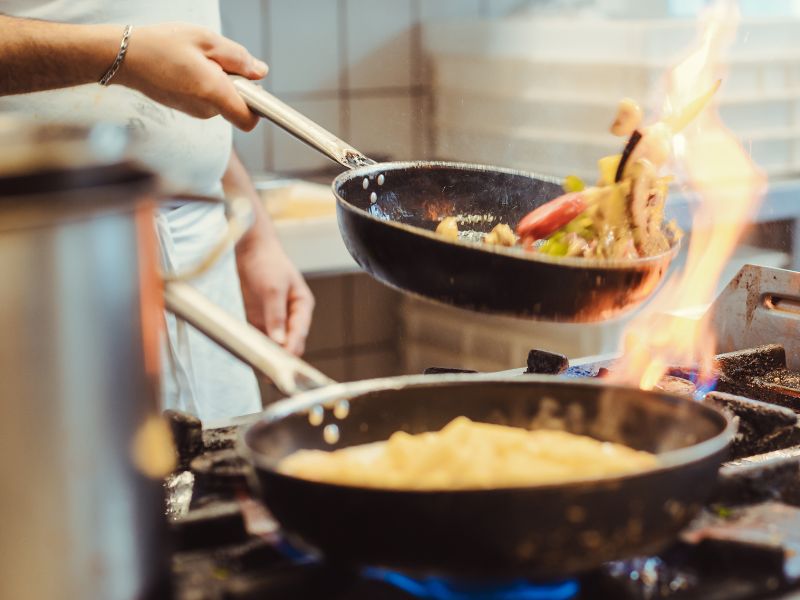Food Recovery and Donation

Reducing is always the best method to solve our food waste problem, but when we are not able to reduce, we can still rescue and divert in order to use food waste as a valuable resource and not add it to the landfill. If the food is still edible, donate it to help those in need get access to food. If the food is not edible it is still a valuable resource as animal feed or compost. This simple act will not only benefit your community but ensure your business complies with SB 1383 regulations.
Donating Excess Food
Food donation turns the challenge of perfectly predicting customer demand into an opportunity by allowing restaurants to help the food insecure in their community. Restaurants can capitalize on donation tax credits while also proving food to those in need.
One in four San Diegans face nutrition insecurity.
By donating food, businesses can:
- Get rid of excess inventory.
- Save money (tax incentives, reduced waste hauling fees).
- Help the local community in need.
- Prevent organic waste from going to the landfill.
Tax incentives
If your business donates food to a charitable organization, you can potentially claim a deduction. Your business must generate taxable income and retain a donation record from the charitable organization. To learn more, access Tax Deduction for Food Donation: A Legal Guide from the Harvard Food Law and Policy Clinic.
Liability
The Federal Bill Emerson Good Samaritan Food Donation Act protects food donors from liability when donating to a non-profit organization – click here for a detailed FAQ. The law states that if the product was donated in good faith, even if it later causes harm to a recipient, the donor is protected from civil and criminal liability. The law covers all packaged and pre-consumer food (prepared or raw), even food that is past its sell-by date, as long as there was no gross negligence or intentional misconduct* of the donor.
Food donation liability protection is offered at both the federal, state, and local levels. No lawsuit related to donated food has ever been filed in U.S. history. Read more about liability protections that exist at Federal and State levels in the County of San Diego and SDFSA’s Food Donations FAQ & State Law Protections.
Steps to set up food donation:
- Identify the type and amount of extra food.
- Determine packaging, labeling, and storage requirements.
- Understand frequency of service.
- Select a food rescue partner.
- Establish the process and transportation plan. Maintain logs of food donations.
View in-depth guides on setting up food rescue:
- Download a packet of food recovery and donation resources listed below created for RSWA in partnership with San Diego Food System Alliance and Solana Center:
- SB 1383 Food Recovery Requirements Overview
- Liability Protection & Food Saftey
- 5 Steps to a Donation Program
- Guide to Food Donation Tax Deductions
- Food Recovery Agreement Template
- Food Recovery Participation Poster
- Guide to Food Rescue – Center for EcoTechnology & Solana Center
- County’s food donation guide – County of San Diego
Find a rescue partner that is a good fit for your needs by contacting these main San Diego agencies or using the search tool below:
Divert
If the food cannot be used by the restaurant or eaten by other people through donation, it is still essential that we keep it out of landfills. Diverting food waste to be used as animal feed, composted, or turned into energy will benefit the planet, community, and the business’s financial bottom line.
- Find a Composter – BioCycle
- Diverting Food Scraps to Animal Feed – Imperial Western Products
- Best practices for effective fats, oils, and grease control – National Restaurant Association
- Signage for trash, recycling, and organic waste – CalRecycle
*Gross negligence is defined as “voluntary and conscious conduct by a person with knowledge (at the time of conduct) that the conduct is likely to be harmful to the health or well-being of another person.”
